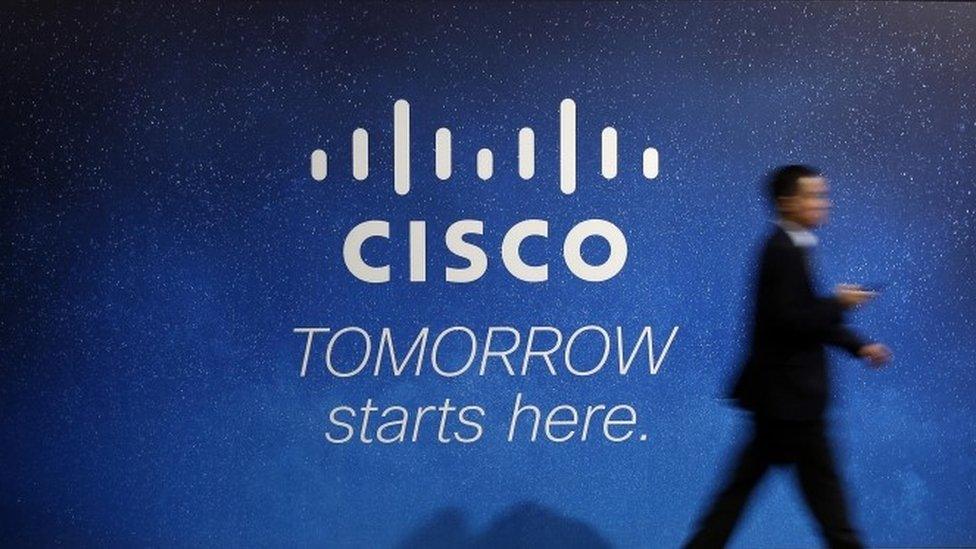'Hard-to-fix' Cisco flaw puts work email at risk
- Published

Experts worry that there may not be an easy way to verify whether a device has been hacked
Security researchers have discovered serious vulnerabilities affecting dozens of Cisco devices.
The flaws allow hackers to deceive the part of the product hardware that checks whether software updates come from legitimate sources.
Experts believe this could put emails sent within an organisation at risk as they may use compromised routers.
Messages sent externally constitute less of a risk, however, as they tend to be encrypted.
The California-based firm said it is working on "software fixes" for all affected hardware.
Hacked hardware
Red Balloon Security researchers say they have used a software vulnerability to target and make changes to a piece of hardware called the Trust Anchor on one Cisco router.
"We've shown that we can quietly and persistently disable the Trust Anchor," Red Balloon chief executive Ang Cui, told Wired magazine. "That means we can make arbitrary changes to a Cisco router, and the Trust Anchor will still report that the device is trustworthy. Which is scary and bad, because this is in every important Cisco product. Everything."
Security experts believe that the vulnerability could cause a major headache for Cisco, which has listed dozens of its products as vulnerable on its website, external.
"We don't know how many devices could have been affected and it's unlikely Cisco can tell either," said Prof Alan Woodward, a computer security expert based at Surrey University.
"It could cost Cisco a lot of money."
Some have questioned why such a hack was possible in the first place.
Most companies use hardware where critical security functions exist in a "read only" configuration, meaning that the code in the chip cannot be altered once manufactured, said security expert Andrew Tierney of Pen Test partners.
"It's a questionable design decision that Cisco hasn't done this."
The solutions available are limited, said Mr Tierney.
"I can't see how a regular user could check whether their device has been hacked and I can't see a way users could secure a compromised device."
Cisco says that because it is repairing a piece of hardware, a fix will require "on-premise reprogramming."
The company wrote on its website that it is "in the process of developing and releasing software fixes for all affected platforms."
- Published17 August 2016

- Published14 May 2019